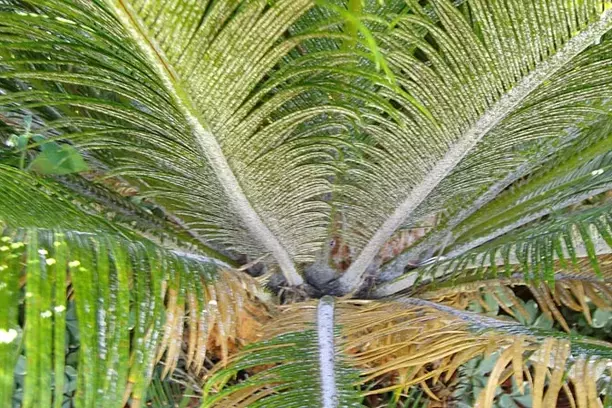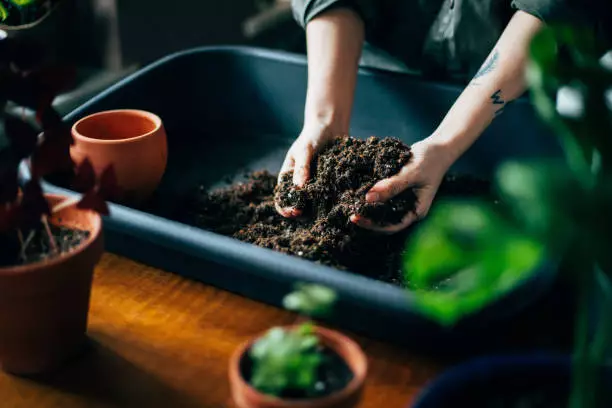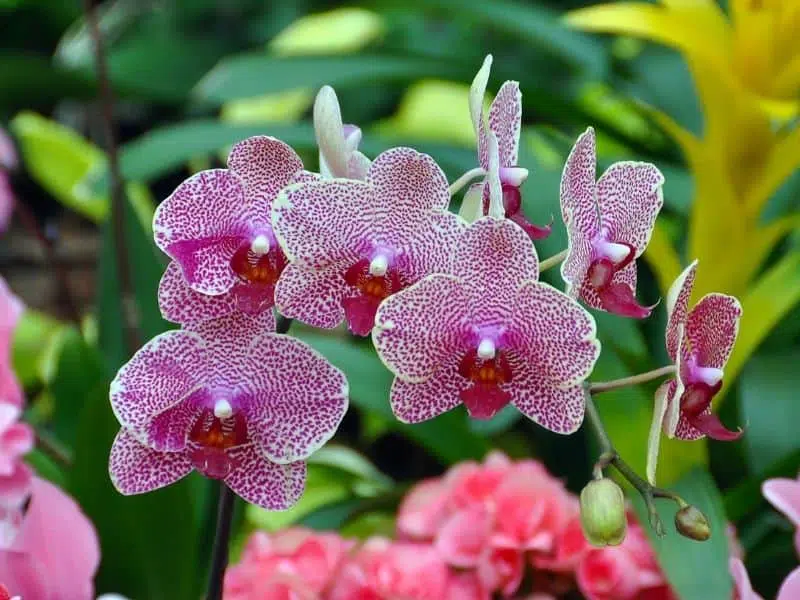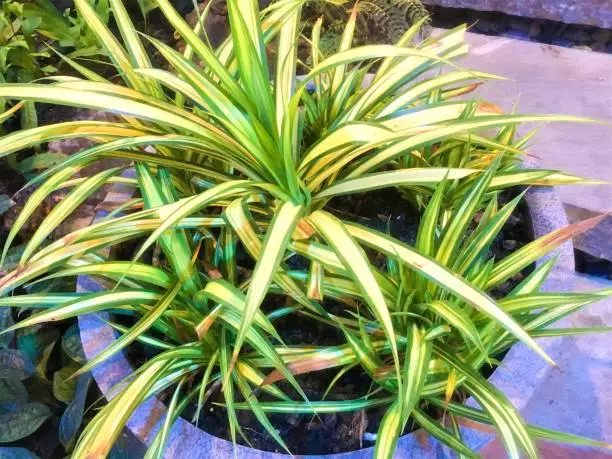If you’re a Calla lily owner, you might have noticed that your plant is drooping. A drooping Calla lily can be a sign of several issues, including overwatering, underwatering, pests, or disease. In this article, we will explore the common reasons why your Calla lily is drooping and what you can do to fix it.
Overwatering is one of the most common reasons why Calla lilies droop. When the soil is too wet, it can cause the roots to rot, which can lead to a drooping plant. On the other hand, underwatering can also cause your Calla lily to droop. When the soil is too dry, the plant will wilt and droop in an attempt to conserve water. It’s essential to find the right balance between watering and letting the soil dry out to keep your Calla lily healthy.
Pests and diseases can also cause your Calla lily to droop. Common pests that attack Calla lilies include spider mites, aphids, and thrips. These pests can damage the leaves and stems, causing the plant to droop. Diseases like root rot, bacterial soft rot, and fungal diseases can also cause a drooping Calla lily.
Understanding Calla Lilies
Calla lilies are beautiful plants that are native to South Africa. They are known for their gorgeous flowers that come in a variety of colors, including white, pink, yellow, and purple. The sword-shaped leaves of the calla lily are also quite distinctive and add to the plant’s overall beauty.
One of the reasons calla lilies are so popular is that they are relatively easy to care for. However, sometimes even the healthiest plants can experience issues, such as drooping. If you’re wondering why your calla lily is drooping, there are a few things you should know.
First, it’s important to understand that calla lilies are sensitive to water. Overwatering can cause the roots to rot, which can lead to drooping and other issues. On the other hand, underwatering can cause the plant to wilt and droop as well.
Another thing to keep in mind is that calla lilies prefer well-draining soil. If the soil is too heavy or compacted, it can prevent water from draining properly, which can lead to drooping. Adding some sand or perlite to the soil can help improve drainage.
Finally, it’s worth noting that calla lilies are sensitive to temperature changes. If the plant is exposed to extreme heat or cold, it can cause the leaves to droop and wilt. Make sure to keep your calla lily in a location with consistent temperatures and avoid exposing it to drafts or direct sunlight.
In summary, calla lilies are beautiful plants that are relatively easy to care for. However, they can experience issues such as drooping if they are over or underwatered, planted in soil that doesn’t drain well, or exposed to extreme temperatures. By understanding these factors and taking steps to address them, you can help ensure that your calla lily stays healthy and beautiful.
Common Causes of Drooping
When it comes to calla lilies, drooping is a common issue that many gardeners face. In this section, we will discuss the most common causes of drooping and how to address them.
Overwatering and Underwatering
Overwatering and underwatering are two of the most common causes of drooping calla lilies. When a plant is overwatered, the roots become saturated and are unable to absorb oxygen. This can lead to root rot, which can cause the plant to droop and wilt. On the other hand, when a plant is underwatered, it can become dehydrated, causing the leaves to droop and wilt.
To avoid overwatering, make sure that the soil is well-draining and that you are not watering the plant too frequently. To avoid underwatering, make sure that you are watering the plant regularly and that the soil is not too dry.
Poor Lighting
Calla lilies require bright, indirect light to thrive. If they are not getting enough light, they may begin to droop and wilt. If you notice that your calla lilies are drooping, try moving them to a brighter location.
Temperature Changes
Temperature changes can also cause calla lilies to droop. If the temperature drops too low, the plant may become stressed and begin to wilt. Similarly, if the temperature gets too high, the plant may become dehydrated and begin to droop.
To avoid temperature-related issues, make sure that your calla lilies are kept in a location with a consistent temperature and avoid exposing them to extreme temperature changes.
Disease and Pests
Diseases and pests can also cause calla lilies to droop. For example, collar rot caused by Pseudomonas aeruginosa can lead to yellowing and wilting of the plant. Similarly, carnation mottle virus can cause systemic wilting of the plant.
To avoid disease and pest-related issues, make sure that you are regularly inspecting your plants for any signs of disease or pests. If you do notice any issues, take action immediately to prevent the spread of the problem.
In conclusion, drooping calla lilies can be caused by a variety of factors, including overwatering, underwatering, poor lighting, temperature changes, and disease and pests. By addressing these issues, you can help your calla lilies thrive and prevent them from drooping and wilting.
Signs and Symptoms of Drooping
When it comes to Calla lilies, drooping can be a sign of a problem. In this section, we will discuss the signs and symptoms of drooping in Calla lilies.
One of the most common signs of drooping is yellow leaves. If your Calla lily is drooping and you notice yellow leaves, this could be a sign of overwatering or underwatering. We recommend checking the soil moisture level and adjusting your watering schedule accordingly.
Another symptom of drooping is leggy growth. If your Calla lily is growing tall and thin, this could be a sign of insufficient light. We recommend moving your plant to a brighter location or supplementing with artificial light.
Cupped blooms are another sign of drooping in Calla lilies. If your blooms are not opening fully and appear cupped, this could be a sign of insufficient water or a lack of nutrients. We recommend checking your soil moisture and fertilizing your plant as needed.
Finally, mushy stems or leaves are a clear sign of overwatering. If your Calla lily is drooping and you notice mushy stems or leaves, it’s time to cut back on watering and make sure your plant has good drainage.
In summary, there are several signs and symptoms of drooping in Calla lilies, including yellow leaves, leggy growth, cupped blooms, and mushy stems or leaves. By identifying these symptoms and addressing the underlying cause, you can help your Calla lily recover and thrive.
Preventing Drooping in Calla Lilies
Calla lilies are beautiful and elegant plants that are popular for their stunning blooms. However, they can be prone to drooping, which can be frustrating for gardeners and indoor plant enthusiasts. In this section, we will explore some guidelines that can help prevent drooping in calla lilies.
Watering Guidelines
One of the most common reasons for drooping in calla lilies is overwatering. It is important to ensure that the soil is well-drained and that the plant is not sitting in standing water. We recommend watering the plant when the top inch of soil feels dry to the touch. It is also important to avoid letting the soil dry out completely, as this can also cause drooping.
Lighting Recommendations
Calla lilies thrive in bright, indirect light. They can tolerate some direct sunlight, but too much can cause the leaves to wilt and droop. We recommend placing the plant in a location that receives partial shade, especially during the hottest part of the day.
Temperature Control
Calla lilies prefer temperatures between 60 and 75 degrees Fahrenheit. Temperatures that are too hot or too cold can cause the plant to droop. It is important to keep the plant away from drafty areas and to avoid exposing it to extreme temperatures.
Disease and Pest Prevention
Diseases and pests can also cause calla lilies to droop. It is important to keep the plant healthy by providing proper care and monitoring it for any signs of disease or pests. We recommend inspecting the plant regularly for any signs of wilting, yellowing, or discoloration. If you notice any issues, take action immediately to prevent further damage.
By following these guidelines, we can prevent drooping in calla lilies and keep them looking beautiful and healthy. Remember to provide proper care, monitor the plant regularly, and take action if you notice any issues.
Reviving a Drooping Calla Lily
If you notice your Calla Lily drooping, don’t worry. It’s a common problem that can be fixed with some simple steps. In this section, we’ll discuss how to revive a drooping Calla Lily.
Correcting Watering Mistakes
Overwatering or underwatering are the most common reasons why a Calla Lily may droop. If you suspect that you’ve been overwatering, check the soil for moisture. If the soil is wet, stop watering and let the soil dry out before watering again. If you’ve been underwatering, increase the frequency of your watering.
Treating Diseases and Pests
If your Calla Lily is drooping and you suspect that it may be due to a disease or pest, it’s important to identify the problem and treat it accordingly. Common diseases that affect Calla Lilies include root rot, soft rot, and fungal rot disease. Pests like powdery mildew and mildew can also cause the plant to droop. Treat the plant with a fungicide or insecticide as needed, following the manufacturer’s instructions carefully.
Replanting and Transporting
If you’ve recently transported or replanted your Calla Lily, it may droop due to the stress of the move. Make sure that the plant is in a well-draining soil mix, and water it thoroughly after replanting or transporting. If the plant continues to droop, give it some time to acclimate to its new environment.
Remember, a drooping Calla Lily doesn’t mean that your plant is doomed. By following these simple steps, you can revive your plant and get it back to its healthy, vibrant self.
Proper Care for Calla Lilies
Calla lilies are attractive and easy-to-care-for plants, but they still require proper care to thrive. Here are some recommendations for caring for your Calla lilies:
Potting and Soil Requirements
Calla lilies grow best in well-draining soil. We recommend using a potting mix that contains peat moss, vermiculite, and perlite. You can also mix in some bone meal to promote root growth. Make sure the pot you use has a drainage hole to prevent excess moisture from building up in the soil.
Watering and Feeding
Calla lilies prefer moist soil, but be careful not to overwater them. Water your Calla lilies when the top inch of soil feels dry to the touch. We recommend using a nitrogen fertilizer every two weeks during the growing season to promote healthy growth.
Light and Temperature Requirements
Calla lilies prefer bright, indirect sunlight. They can also tolerate some direct sunlight, but be careful not to expose them to too much sun, as this can cause sunburn. Calla lilies grow best in temperatures between 60 and 75 degrees Fahrenheit.
Preventing Diseases and Pests
To prevent fungus and other diseases, make sure your Calla lilies are planted in well-draining soil and are not overwatered. If you notice any signs of disease, use a fungicide to treat the plant. Calla lilies are also prone to spider mites and aphids, so be sure to inspect your plants regularly and use insecticidal soap to control any infestations.
Winter Care for Calla Lilies
If you live in a temperate climate, you can plant your Calla lilies in a garden bed and cover them with mulch during the winter months. If you have indoor plants, reduce watering and feeding during the winter to allow the plant to go dormant. You can also prune any dead or damaged leaves to encourage new growth in the spring.
Overall, Calla lilies are easy to care for and make attractive additions to any home or garden. With proper care, your Calla lilies will thrive and produce beautiful flowers year after year.
Frequently Asked Questions
Why is my Calla lily drooping without flowers?
If your Calla lily is drooping without flowers, it may be due to over-watering or under-watering. Check the soil moisture level and adjust watering accordingly. If the soil is too wet, allow it to dry out before watering again. If the soil is too dry, water thoroughly and regularly.
How can I treat soft rot in my Calla lily?
Soft rot in Calla lilies is caused by a bacterial infection and can be treated with a fungicide. Remove any affected leaves or flowers and apply the fungicide according to the package instructions. It is also important to avoid over-watering and to provide good air circulation to prevent future infections.
Why is my indoor Calla lily dying?
Indoor Calla lilies can be prone to pests and diseases if they are not given proper care. Make sure your plant is getting enough light, but not direct sunlight, and is not too cold or too hot. Check the soil moisture level and adjust watering accordingly. Keep an eye out for pests such as spider mites and treat them promptly if you see any signs of infestation.
Why won’t my Calla lily stand up?
If your Calla lily won’t stand up, it may be due to weak stems or insufficient support. Try staking the plant or providing a trellis to help it stand upright. You can also try providing more light or fertilizer to encourage stronger growth.
How do I make my Calla lilies stand?
To make your Calla lilies stand, make sure they are getting enough light and water. Provide support if necessary and avoid over-fertilizing, which can lead to weak stems. You can also try cutting back on watering to encourage the plant to develop stronger roots and stems.
How often should I water my Calla lilies?
Calla lilies prefer moist soil but can be prone to root rot if over-watered. Water your plant thoroughly when the top inch of soil feels dry to the touch, but do not let it sit in standing water. Adjust watering frequency based on the temperature and humidity levels in your environment.



